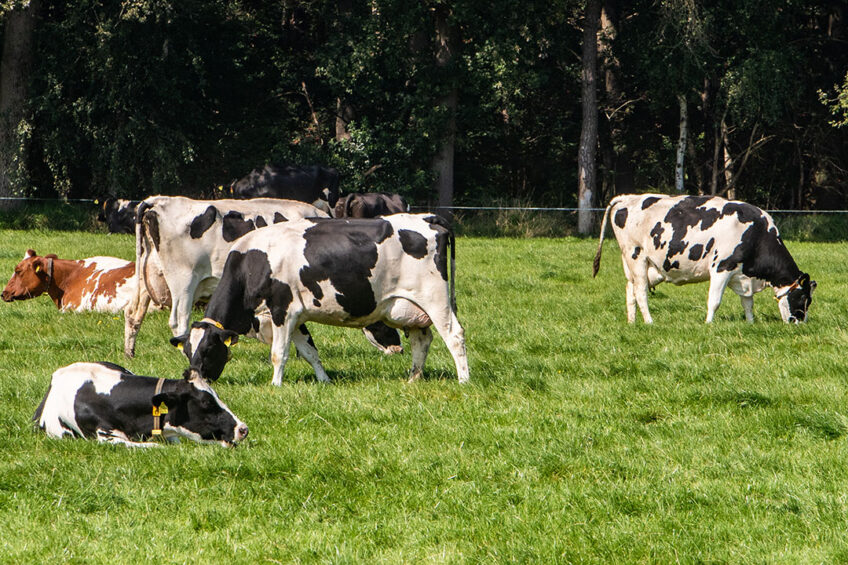Shift from artificial fertilisers for dairy farms without reducing yields

Soaring input prices over the past 2 years have been a concern for many producers, and for dairy farmers the cost of fertiliser has been a huge challenge.
Just 4 years ago, 900 litres of milk could pay for one tonne of fertiliser, but earlier this spring (March 2022), it would take 2,280 litres to cover that 1 tonne.
Dairy farmers do have easy access to the organic manures produced by their cattle, which is a large advantage when it comes to meeting crop nutritional needs. Farmyard manure and slurry from dairy cattle contain a significant amount of phosphate and potassium (P and K), meaning these nutrients can be more easily supplied to grasses and crops.
But the low rates of nitrogen in cattle manure and slurry mean dairy farmers spread artificial fertilisers such as ammonium nitrate on their land to balance the nutrient content of their soils, and as a result use a high proportion of artificial nitrogen fertilisers compared to other sectors. Applications of artificial nitrogen fertiliser improve the rate of growth and quality of the grass, generating good quality grazing and silage. This, in turn, increases the volume and quality of milk produced per cow.
In its latest briefing for farmers, the National Farmers’ Union urged producers to:
- Apply fertiliser when sward demand is greatest
- Test slurry to measure nitrogen levels
- Use a GPS spreading system
Silage quality, it said, can be increased by cutting grass 4 or more times per year and that interventions to improve grass quality are more cost-effective than having to buy in feed to make up for poor silage.
Alternatives to fertilisers
It said there are alternatives to artificial fertilisers that farmers should think about using, such as growing legumes and nitrogen fixing plants among grass. Species such as clovers fix nitrogen from the atmosphere and store it in the soil.
Herbal leys are another alternative increasingly used by dairy farmers. A sward content of around 30-40% dry matter of clover can yield annual dry matter equivalent to that produced from 180kg N/ha applied to a pure grass sward. Other alternative organic materials include biosolids, composts, anaerobic digestates and waste-derived materials.
The union says saving costs by dramatically decreasing applications of artificial fertiliser can cause reduced production of forage and increased costs of bought-in feed. It is currently asking dairy farmers to outline their intentions for milk production over the next 2 years by filling in a short survey. It says it urgently needs to address the impact the appalling situation in Ukraine and input cost inflation may be having on the sector, and which factors are driving milk production. It wants to capture information on any plans to increase, decrease or stop milk production and capture the main reasons. This information will support the union in calling for correct policy interventions from the UK government.
Join 13,000+ subscribers
Subscribe to our newsletter to stay updated about all the need-to-know content in the dairy sector, two times a week.










